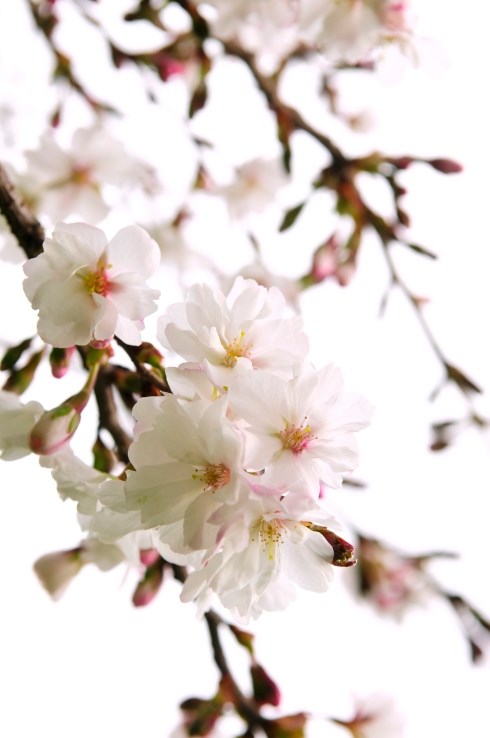 Shoghi, my 9 year-old son, and I went to Butchart Gardens today to visit the inspirational Japanese garden and talk about things of the spirit.
Shoghi, my 9 year-old son, and I went to Butchart Gardens today to visit the inspirational Japanese garden and talk about things of the spirit.
There is a path that goes alongside the garden on one side, with the Shinto gate entryway at the top, two exits further down, and a bench at the very bottom, looking meditatively back up that path.
We decided to begin with the Shinto gate, treating this journey in the garden like our journey through life.
The gate itself is quite symbolic with many layers of meaning, but I don't want to get into that here, for I want to focus our attention on the garden itself, but it can be seen as a metaphor for our birth.
After passing through this gate we felt a bit closed in, like a newborn baby beginning to see the world for the first time. We were surrounded by giants, mighty trees towering over us, unable to see far, but in awe with what we could. We followed the path down the hill, paralleling the watercourse on our right. It was here that Shoghi noticed that you can see the flowers with eyes, smell them with your nose, and listen to the sound of the water with your ears. It is truly a multi-sensory experience.
As we descended, we noticed the water sounds changed tone, some high notes coming in and out of bloom, the low notes still present but beginning to fade, all of them reminding us of a beautiful song that developed as we walked. We looked around and saw a small pagoda across the stream, hidden among the trees, like the promise of a place of peace which we could not yet reach.
Even further down these beautiful tones began to fade into the background. They were still present, as they are throughout the garden, but now you had to focus to really notice them, instead of the birds and the breeze blowing through the leaves. It was almost like that joy of childhood that begins to pass as you move through your life, easy to forget, but still there when you take the time to notice it.
At that point there was a small field of moss on our left, reminiscent of grass, with a single upright rock in the middle. It was as if we were discovering our self for the first time, lonely but present, there for all to see. Conspicuous. It was an awareness that was only to grow as we continued onwards.
This was when the path split. We could cut to the right, bypassing most of the garden in our rush to get to the end, or head off to the left, moving towards that lonely rock. There were benches throughout, each one offering a moment to rest and contemplate some wonder that would be so easy to miss. Each one offered a moment to reflect on how the external garden offered an insight into our own internal spirit.
And all throughout the garden, if we paid attention, we could always hear the music of the water.
We reached the bottom, curved around and began to head back up. It was then that we began to cross the waterway over and over, sometimes on an elegant bridge, other times on a simple rock slab, occasionally on individual rocks leading a path across the little brook. Those contemplative little scenes of beauty were more abundant now, but also more hidden. Like life, as you age, there is more to see, but you have to make a greater effort to do so.
We also saw more of those upright rocks, but now there were three, showing us the generations of a family.
Now we arrived back at that pagoda, but this time from the vantage of having traveled through most of the garden. We felt as if that original path, now seen from the other side of the water, was our childhood and we could look back on that parent-child relation from the other's perspective. We could take the time to sit and rest, enjoying the awareness of what those who were now on that path would soon enjoy. It was also here that we saw one of the most beautiful scenes on our journey. There was a red-flowered tree shadowing the pagoda, and it had dropped most of its petals, blanketing the ground with a dark red, a stunning painting that you could only see from this one point. But, like life, we had to eventually move on.
Here the climb up continued, and we, once again, had a choice of paths. As we approached the exit, however, we saw another single standing rock. It reminded us that this exit from life is a step that we must always take on our own.
After exiting we sat on the bench that was overlooking the path outside the garden, watching as some people began their journey, and others completed theirs. We found ourselves wishing those beginning a silent blessing on their journey, and wondering what those leaving had experienced. We recognized, my son and I, that even though we spent the time together, we still had each seen different things.
And we saw some pass by the entry and go down the path straight to the exit, never entering, like those many siblings of Shoghi's who never saw life in this world. We felt that these souls are waiting for us to exit so that we can be with them once again outside the garden.
 Mead Simon is a member of the Baha'i international communty. He is an artist, writer and dad, and is occassionally asked to give public talks. He can regularly be found writing his blog at www.onebahai.blogspot.com.
Mead Simon is a member of the Baha'i international communty. He is an artist, writer and dad, and is occassionally asked to give public talks. He can regularly be found writing his blog at www.onebahai.blogspot.com.
You can read more articles from our interfaith blog, Spiritually Speaking HERE


